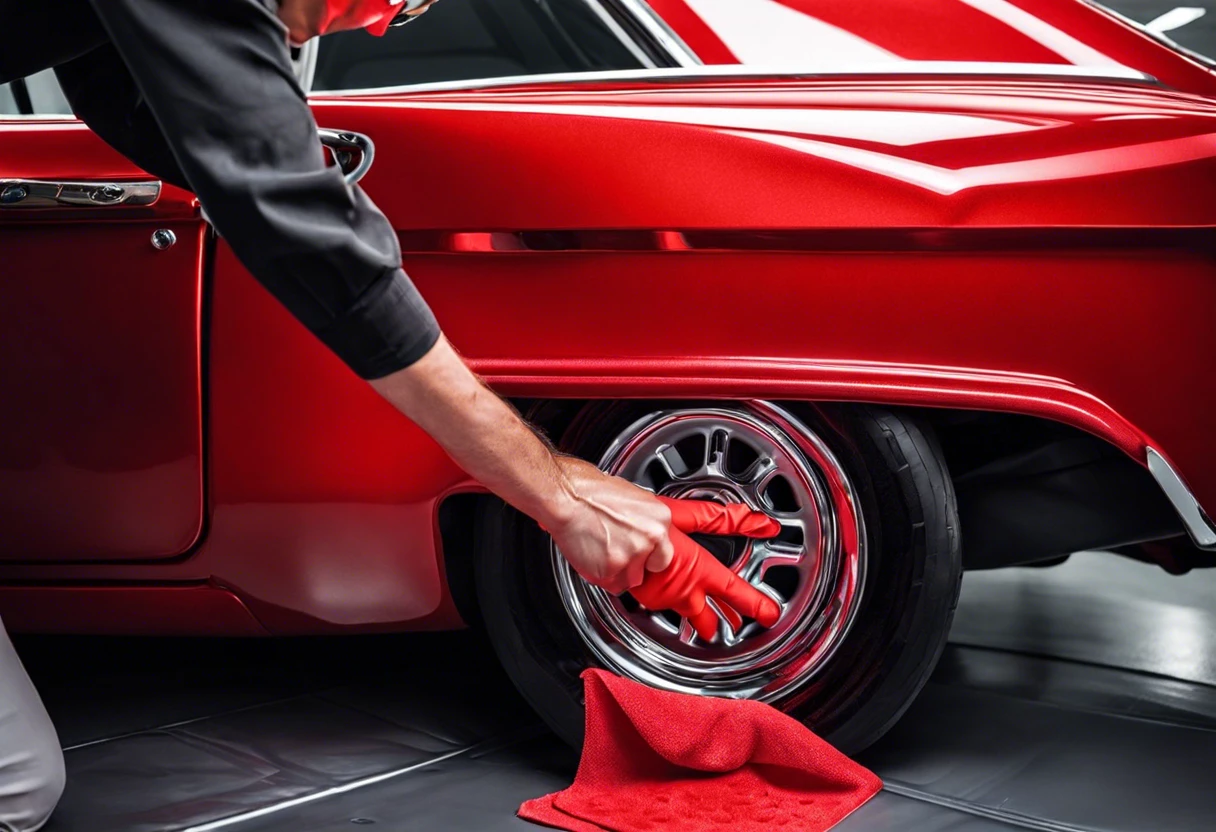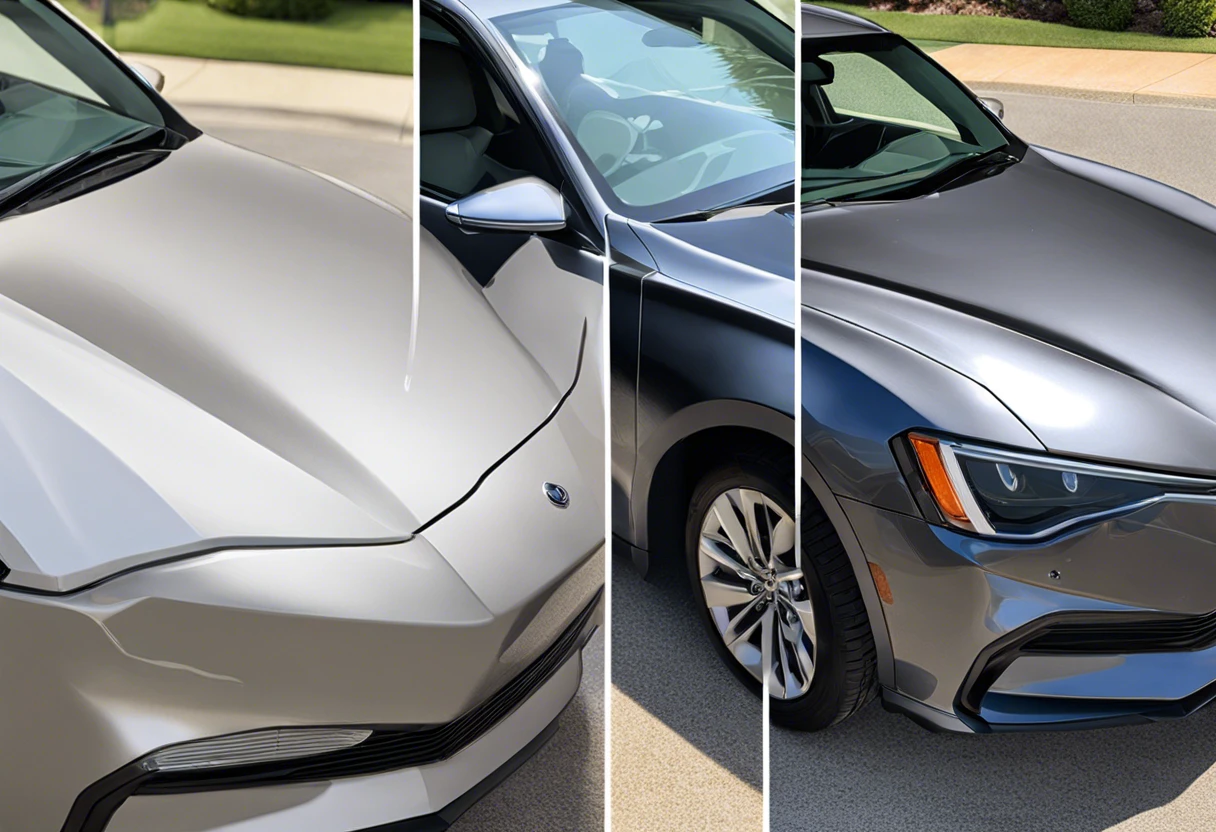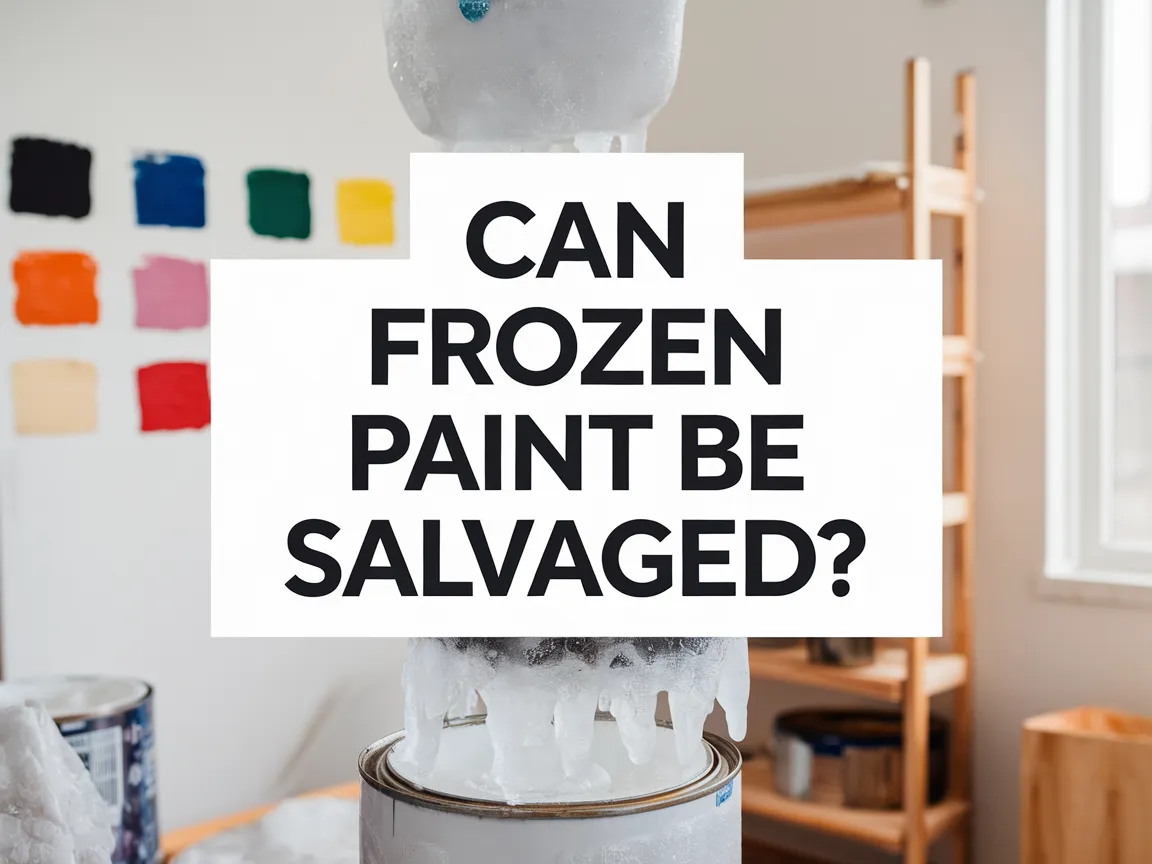How to Get Rid Of Water Spots on Car Paint?
Water spots are like tiny, dull marks that show up on your car’s shiny paint. They happen when water dries and leaves behind a little bit of dirt or minerals.
Knowing how to get rid of water spots on car paint is super important! I once had these spots on my ride, and it felt like my car was sad and unpolished.
In this article, you’ll learn all about removing those pesky water spots, gathering tools for the job, following a simple step-by-step guide, choosing the right products, and understanding different types of water spots along with their treatments.
Contents
- 1 How to Get Rid Of Water Spots on Car Paint?
- 2 What Are Water Spots?
- 3 Preparation: What You Need Before You Start
- 4 Step-by-step Guide to Remove Water Spots From Car Paint
- 5 Recommended Products for Removing Water Spots
- 6 Different Types Of Water Spots and Their Treatments
- 7 Factors Affecting the Formation Of Water Spots on Car Paint
- 8 How Weather Conditions Affect Water Spot Formation
- 9 Understanding the Role of Car Maintenance in Spot Prevention
- 10 Water Hardness Levels and Their Impact on Car Care
- 11 Common Issues Encountered When Removing Water Spots
- 12 Finishing Touches: Ensuring Your Car Looks Pristine
- 13 Understanding the Impact of Water Spot Removal Techniques
- 14 Proven Techniques to Prevent Future Water Spots
- 15 Analyzing Regional Water Quality and Car Care
- 16 Frequently Asked Questions About Removing Water Spots
- 17 Conclusion
- 18 Additional Resources
How to Get Rid Of Water Spots on Car Paint?
To get rid of water spots on car paint, mix equal parts white vinegar and distilled water. Apply it to the spots with a soft cloth. Wipe gently and rinse with clean water. Repeat if needed.
What Are Water Spots?
Water spots are mineral deposits left behind when water evaporates. They often contain calcium (Approximately 1.5% By Weight), magnesium, and other minerals that can stick to surfaces like car paint.
The Finishing Touch
A freshly painted wall is a blank canvas. The best way to bring your room to life is with a single piece of statement art that ties everything together.
Browse Wall Art at Big Wall DecorIf you’ve ever dealt with a stubborn water spot, you know it can be frustrating. I found that a simple spray of vinegar worked wonders on my car—it was a game changer and surprisingly effective.
I’ll never forget the day at the car wash when I learned about water spots on paint. While waiting, a professional shared tips on removing water spots. He emphasized the importance of timely cleaning, linking it to how often minerals settle in hard water areas. It made me realize how vital car maintenance is to avoid those pesky stains. If you’re struggling with stubborn paint marks, you might want to explore effective paint removal techniques.
Preparation: What You Need Before You Start
What do you need to remove water spots from car paint?
- pH-neutral car wash soap: Use a soap like Adam’s Car Wash Shampoo, designed to gently lift dirt and grime. It’s crucial for preparing the surface safely before treatment.
- Cleansing mitt: A quality mitt, such as Meguiar’s Microfiber Wash Mitt, helps you wash without scratching the paint. It’s essential for protecting your car’s finish.
- Microfiber towels: Get options like The Rag Company multi-purpose towels, ideal for drying and detailing. They absorb better and help prevent water spots during drying.
- Water spot remover: Use a product like Chemical Guys Water Spot Remover. This product effectively targets stubborn spots, making your job easier.
We have now covered the necessary preparations before starting. Next, we will discuss a step-by-step guide to remove water spots from car paint.
Also See: Can You Paint Your Nails After Removing Acrylics?

Step-by-step Guide to Remove Water Spots From Car Paint
Follow these steps to effectively remove water spots from your car’s paint.
-
Wash the Car Thoroughly
First, rinse the car with water to remove loose dirt and debris. Use pH-balanced car wash soap with water at a temperature of about 30°C (86°F) for the best results.
Gently scrub the car with a microfiber wash mitt, focusing on the spots. Rinse completely to avoid soap residue that can also create spots.
-
Apply a Specialized Spot Remover
Next, use a specialized water spot remover containing citric acid or other gentle cleaners. Apply it directly to the stained areas and let it sit for a few minutes before scrubbing gently.
This step is crucial; citric acid breaks down the mineral deposits causing the spots. Rinse again with clean water for maximum effectiveness.
-
Use a Clay Bar Treatment
Now, take a clay bar. Knead a small piece and lubricate it with clay bar lubricant for easier handling.
Gently glide the clay over the affected areas until the resistance from contaminants disappears. This removes additional debris that spot removers might miss.
-
Polish the Affected Areas
Choose a suitable polishing compound and apply it using a microfiber towel or orbital buffer. Polish the areas in a back-and-forth motion to restore shine and remove haziness.
Your goal is to revive the surface, so take your time. This step greatly enhances your car’s appearance.
-
Seal With Wax or Sealant
Once polishing is complete, apply a quality wax or sealant. This protects your car’s finish and creates a barrier against future stains.
Use a soft wax applicator to cover the surface evenly. Let it cure according to the product directions, usually drying to a haze before buffing with a clean microfiber towel.
You should now have a good understanding of how to eliminate water spots from car paint. In the next part, we’ll discuss suggested products for removal.
The Finishing Touch
A freshly painted wall is a blank canvas. The best way to bring your room to life is with a single piece of statement art that ties everything together.
Browse Wall Art at Big Wall DecorRecommended Products for Removing Water Spots
To get rid of water spots on car paint, consider using these tried-and-true products.
We’ve wrapped up recommended products for removing water spots here. Let us turn our attention to different types of water spots and their treatments.
Different Types Of Water Spots and Their Treatments
Let’s cover the different types of water spots: mineral spots, soap spots, acid spots, and combination spots.
-
Mineral Spots
Mineral spots come from hard water, containing calcium and magnesium. You’ll find them after a rain shower or car wash. To remove them, use a vinegar solution. Spray it, wait a moment, and gently wipe it off.
-
Soap Spots
Soap spots appear when leftover car wash soap dries on your paint, often looking streaky or foggy. You can eliminate these by washing the car again with clean water—no soap this time!
-
Acid Spots
Acid spots result from bird droppings or tree sap, which can damage your paint by eating into the clear coat. Use specific car cleaning products with pH-balanced formulas to neutralize the acid. If you’re curious about alternative paint applications, you might want to explore safe paint techniques for different surfaces.
-
Combination Spots
Combination spots occur when mineral, soap, and acid spots combine, creating a mess on your paint. To tackle them, start with a thorough wash, then use clay bars and polish to restore the finish. Professional painters often explore unique paint treatment techniques that can help prevent complex surface damage.
In my experience, mineral spots are the most common issue. Regularly using a vinegar solution has worked wonders for my clients’ cars.
So far we covered various water spot types and their treatments. Let’s look at the factors that contribute to water spot formation.

Factors Affecting the Formation Of Water Spots on Car Paint
What factors influence your ability to eliminate water spots on your car’s paint?
-
Water Quality: Hard water contains minerals that leave stubborn spots on your paint.
-
Sun Exposure: Direct sunlight can bake water spots onto the paint, making removal tougher.
-
Pollen and Dust: These particles can trap moisture, increasing the chances of water spots forming.
-
Cleaning Products: Harsh or oily cleaners may leave residues, complicating removal efforts.
How Weather Conditions Affect Water Spot Formation
Do you know that weather plays a huge role in how water spots form on your car paint? Let’s dig into how various conditions impact those pesky marks.
- High Humidity: In wet environments, moisture lingers on the paint, fostering prolonged water spot formation. It’s essential to dry your car promptly.
- Rain Frequency: Frequent rain increases chances of spot development, especially if your car isn’t washed afterward. Always wipe down the surface!
- Wind Patterns: Strong winds can spread dirt and debris on wet surfaces, promoting spots or scratches. Clean your car regularly to combat this.
- Temperature Fluctuations: Rapid temperature changes can cause moisture to evaporate quickly, creating harsher mineral deposits. Store your car indoors during extreme weather.
Understanding the Role of Car Maintenance in Spot Prevention
Have you ever thought about how regular maintenance can prevent water spots? Let’s explore this crucial link.
- Frequent Inspections: Regularly check your paint for early signs of water spots. Catching them early makes removal easier!
- Consistent Waxing: Waxing your car every three months helps create a protective layer, making it harder for spots to form and easier to remove them.
- Routine Washing: Stick to a washing schedule of every two weeks. This removes dirt and minerals before they can settle and damage the paint.
- Detailing Services: Consider professional detailing once or twice a year. Experts use specialized products that protect and enhance your car’s finish.
Water Hardness Levels and Their Impact on Car Care
Ever wondered why some places have water that creates more spots than others? Let’s talk about water hardness.
| Hardness Level | Mineral Content (mg/L) | Spot Likelihood | Suggested Treatment Frequency |
|---|---|---|---|
| Soft Water | 0-60 | Low | Every 4-6 weeks |
| Moderately Hard Water | 61-120 | Medium | Every 2-4 weeks |
| Hard Water | 121-180 | High | Every 1-2 weeks |
| Very Hard Water | 181+ | Very High | Weekly |
Knowing your water hardness can help you adjust your cleaning frequency. If you live in a hard water area, a proactive approach is key!
Common Issues Encountered When Removing Water Spots
Once, my friend Jack thought he could just use a towel to fix water spots on his car’s paint. Big mistake! Rubbing created swirl marks instead. Oh no!
The Finishing Touch
A freshly painted wall is a blank canvas. The best way to bring your room to life is with a single piece of statement art that ties everything together.
Browse Wall Art at Big Wall DecorTo fix this, he should’ve used a pH-balanced detailing spray and a microfiber cloth. Cleaning gently removes spots without damage, keeping the car’s shine intact.
Finishing Touches: Ensuring Your Car Looks Pristine
After learning how to remove marks from your car’s finish, protect it with quality wax. Choose a product that offers UV protection, like Meguiar’s Ultimate Wax.
Inspect the cleared areas with a fine-coat inspection light. Look for any residual marks; ideally, they should be visible at a 100-watt (W) equivalent brightness.
I recommend applying a ceramic coating for long-lasting results. This solution provides excellent waterproofing, repelling water beads and lasting through 30 car washes.
Understanding the Impact of Water Spot Removal Techniques
Different techniques for removing water spots can vary in effectiveness and safety. Let’s break down some popular methods.
| Technique | Effectiveness | Risk of Damage | Time Required |
|---|---|---|---|
| Vinegar Solution | High | Low | 5-10 minutes |
| Clay Bar Treatment | Very High | Low if done correctly | 30 minutes |
| Polishing Compound | High | Moderate | 15-20 minutes |
| Water Spot Removers | High | Medium (depends on the product) | 10-15 minutes |
Proven Techniques to Prevent Future Water Spots
Let’s explore some effective practices to keep those stubborn spots from returning.
- Frequent Washing: Wash your car every two weeks. Regular cleaning prevents mineral buildup from hard water.
- Drying Method: Always dry your car with microfiber towels after washing to prevent water spots from forming.
- Using a Quick Detailer: Spritz a quick detailer spray on your car before it dries to limit mineral deposits.
- Garage Storage: Store your vehicle in a garage, shielding it from rain, dew, and environmental pollutants.
Taking these steps can save you time and effort when you want to maintain that glossy finish and prevent unsightly water spots.
Also See: Can You Paint Your Rims Black? Here’s What to Know!
Analyzing Regional Water Quality and Car Care
Where you live can affect how often you deal with water spots. Let’s dive into the regions most impacted by hard water.
| Region | Hard Water Level | Common Issues |
|---|---|---|
| Midwestern USA | High | Frequent mineral buildup |
| Southeastern USA | Medium | Soap and mineral spots |
| Western USA | Very High | Extreme water spots and corrosion |
| Northeastern USA | Low | Less frequent, but possible soap spots |
Understanding your area’s water quality helps you prepare for upkeep. If you live in a high-hardness area, adjust your car care routine to stay spot-free!
Frequently Asked Questions About Removing Water Spots
What Causes Water Spots on Car Paint?
Water spots on car paint are caused by minerals in hard water that evaporate, leaving behind white marks. These minerals, like calcium and magnesium, can result in long-lasting stains if not cleaned properly.
Can I Use Household Cleaners to Remove Water Spots?
No, using household cleaners to remove water spots is not advisable. These cleaners often contain harsh chemicals that can damage the protective clear coat and underlying paint, leading to further issues. When selecting the right paint solution, you might want to explore Benjamin Moore’s exterior paint options for superior protection.
How Often Should I Wash My Car to Prevent Water Spots?
You should wash your car at least every two weeks to help prevent water spots. Regular washing removes deposits that cause spots, especially after rain or hard water exposure.
Will Waxing My Car Help Prevent Water Spots?
Yes, waxing your car can help prevent water spots. A good wax creates a barrier, making it harder for water and minerals to stick to your paint, protecting it from potential stains.
Are Water Spots Permanent Damage?
No, water spots are not typically permanent damage. If caught early, most water spots can be removed with the right cleaning technique and product, preventing lasting harm to your car’s finish. When dealing with challenging surface contaminants, you might want to explore professional paint restoration methods.
How Can I Tell if My Water Spots Are Surface-level?
You can tell if water spots are surface-level by smoothly running your hand over them; if the surface feels rough, they might be embedded stains. A light polishing can usually resolve shallow stains effectively.
What’s the Best Time to Wash My Car to Reduce Water Spots?
The best time to wash your car to reduce water spots is early in the morning or late in the evening when temperatures are cooler. This helps prevent water from evaporating too quickly and leaving mineral deposits behind. If you’re working with specific materials like aluminum, you might want to explore painting aluminum surfaces effectively.
What Type Of Products Are Most Effective Against Water Spots?
Products that contain specifically formulated paint cleaners or clay bars are most effective against water spots. These abrasive options can lift and remove stubborn mineral deposits without harming your car’s automotive paint surface. If you’re curious about mixing paint colors to tackle specific restoration challenges, you might want to explore how different paint colors blend.
Can Rain Water Create Less Spots Than Hard Water?
Yes, rainwater typically creates fewer spots than hard water because it lacks the minerals found in tap water. However, rain can pick up pollutants that might stick to your car and cause staining if not washed off. If you’re concerned about potential surface damage, you might want to explore protective painting techniques for various surfaces.
Conclusion
We’ve covered a lot—water spots, their causes, products like vinegar and polish, step-by-step methods, and common issues.
Happy to say, getting rid of water spots on car paint involves using the right tools and techniques; using vinegar and a microfiber cloth, for instance, can yield results with just a bit of elbow grease.
For further information and tips on car care, visit Paint Answers.
Additional Resources
- Loomis, A. (2011). Figure Drawing for All It’s Worth. New York, NY: Titan Books.









